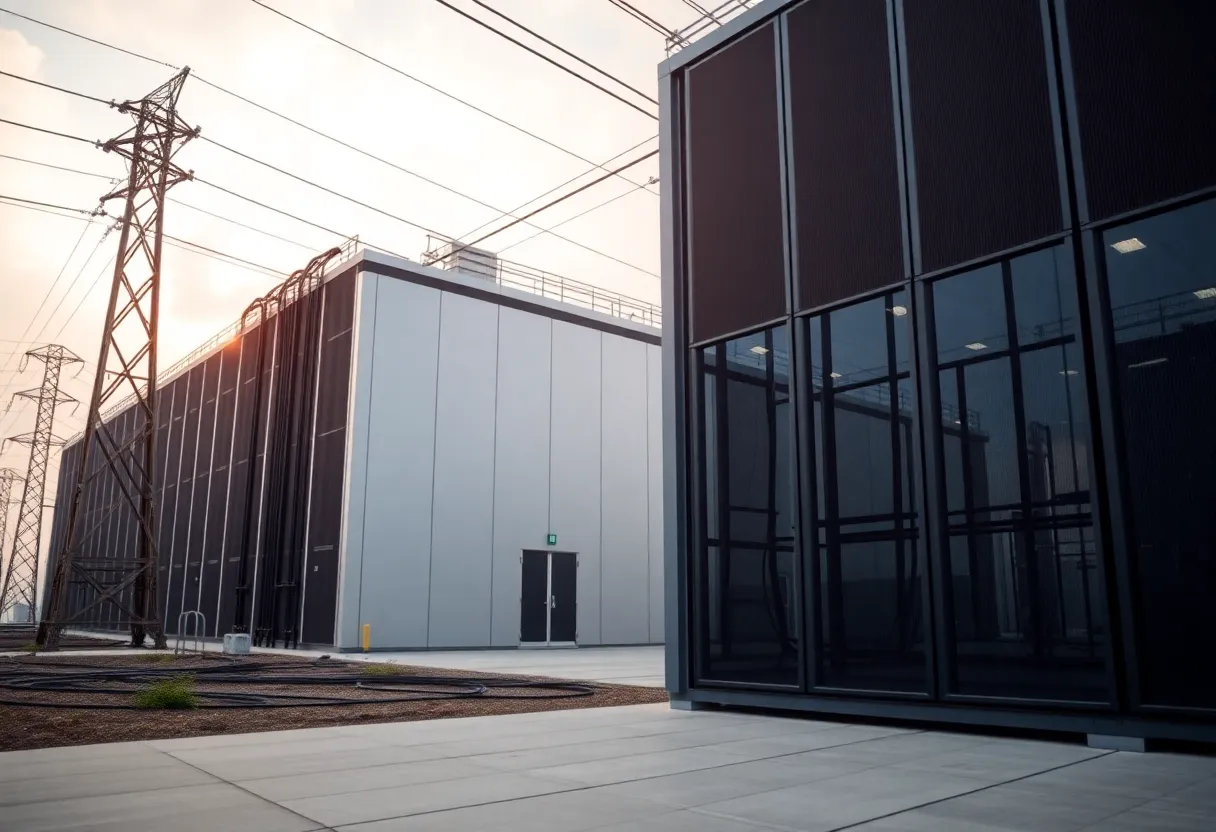Richmond, Virginia, September 27, 2025
News Summary
The rapid growth of data centers in Virginia, North Carolina, and Ohio is leading to a rise in electricity demand, creating concerns over increasing utility costs and grid reliability. Dominion Energy predicts a significant rise in power needs, prompting calls for new facilities amidst conflicting clean energy goals. Critics fear that residential customers will bear the financial burden of these corporate expansions. As states work to balance energy demands and sustainability objectives, innovative solutions like microgrid technology emerge as potential alternatives.
Richmond, Virginia – The rapid expansion of data centers in Virginia, North Carolina, and Ohio is triggering an unprecedented surge in electricity demand, raising concerns among local residents and businesses about rising utility costs. Utility providers are bracing for significant increases in power demand that may clash with clean energy goals set forth in state legislation.
Dominion Energy, Virginia’s primary utility provider, forecasts a 5% annual increase in peak power demand over the next 15 years. This projection contradicts the Virginia Clean Economy Act (VCEA), which mandates the state move to carbon-free energy by 2045. In response to the looming demand, Dominion Energy has proposed the construction of a new 944 MW natural gas “peaker” plant. However, this proposal has met with strong opposition from clean energy advocates who argue for the pursuit of cleaner energy alternatives.
Concerns about rising electricity costs and grid reliability have intensified, particularly as Virginia approaches the November 2025 elections. Many residents are voicing apprehensions that skyrocketing utility bills could stem directly from the burgeoning data center industry.
In North Carolina, similar challenges are emerging. The state is projected to require an additional 6 GW of capacity to accommodate increasing electricity demands, largely driven by data centers. Like Virginia, stakeholders in North Carolina are grappling with how to balance the need for increased energy capacity with clean energy commitments.
Ohio is also adapting to the data center surge, implementing a new tariff structure that targets large data centers. This structure charges operators a base of 85% of their projected usage, ensuring they are responsible for the costs associated with necessary upgrades to electrical infrastructure, rather than shifting these expenses onto residential customers.
The ripple effects of data center growth on utility bills are becoming evident. The PJM Interconnection, a regional transmission organization, has identified data center expansion as the principal factor behind a projected 22% increase in wholesale electricity prices for 2025. Economic forecasts indicate that U.S. electricity demand could grow by 2.5% annually through 2035, with data center operations being a significant contributor to this rise.
Critics, including residents and consumer advocates, warn that this increase in utility costs represents a transfer of wealth from residential customers to corporations benefiting from the expansion of data centers. Companies such as Amazon and Microsoft are undertaking various stages of planning and constructing data centers in areas already facing grid challenges due to heightened energy demands.
Amid these challenges, microgrid technology is increasingly viewed as a viable solution to mitigate the strain on larger electrical grids. New legislative measures are being introduced to support the development of microgrids as a means to address growing electricity needs while simultaneously attempting to uphold clean energy objectives.
Impact on Local Communities
The ongoing expansion of data centers is not only transforming electricity demand but also affecting local economies. Residents and local businesses face the dilemma of balancing the benefits of technological growth with the financial ramifications associated with increased utility costs. As debates continue, the push for sustainable and equitable solutions remains critical in navigating the complexities of data center expansion and electricity demand management.
Looking Ahead
As energy needs rise in Virginia, North Carolina, and Ohio, the coming years will be crucial in determining how these states respond to infrastructural demands while adhering to legislative clean energy goals. The collaborative efforts of policymakers, utility companies, and community stakeholders will play a vital role in shaping the future landscape of energy consumption in the region.
FAQs
Why are data centers causing an increase in electricity demand?
Data centers require significant amounts of electricity to operate their servers, cooling systems, and other infrastructure, leading to increased demand from utility providers.
How are utility companies responding to the rising demand?
Utility companies like Dominion Energy are forecasting power demand increases and proposing new facilities, such as natural gas plants, to meet these needs, although this is met with pushback from clean energy advocates.
What are the implications for residential customers?
Residential customers may see higher utility bills as utilities adjust rates to accommodate the infrastructure needs of expanding data centers, potentially resulting in a wealth transfer from residents to corporations.
What are microgrids and how can they help?
Microgrid technology can help alleviate pressure on larger electrical grids by providing localized energy generation and management, potentially leading to more reliable and sustainable energy solutions.
Deeper Dive: News & Info About This Topic
HERE Resources
Arizona’s Sports Betting Market Continues to Thrive
IDI Logistics Acquires Industrial Property in Phoenix
Portland Initiates 82nd Avenue Crossing Project for Pedestrian Safety
EPA Introduces New Guidelines to Streamline Permitting Process
Phoenix Construction Market Sees Targeted Growth Amid Tariff Pressures
Phoenix Construction Market Faces Tariff Challenges While Growing
Construction Industry Faces Significant Challenges with Declining Activity
Challenges in Virginia’s Construction Industry
TSMC Begins Construction on Water Reclamation Plant in Phoenix
Metro Phoenix Ranks Second in North America for Data Center Development
Additional Resources
- JD Supra: The Rise of Data Centers and Their Impact
- JD Supra: The Site Report on Construction Law
- Business Insider: Electric Bills Rise in 13 States Due to Data Centers
- Quartz: Americans’ Electricity Bills Rise Due to Data Centers
- New York Times: AI Data Centers and Electricity Costs
- Wikipedia: Data Center
- Google Search: Data Centers Electricity Impacts
- Google Scholar: Data Centers Energy Demand
- Encyclopedia Britannica: Data Center
- Google News: Data Centers Electricity Costs
Author: STAFF HERE PHOENIX WRITER
The PHOENIX STAFF WRITER represents the experienced team at HEREPhoenix.com, your go-to source for actionable local news and information in Phoenix, Maricopa County, and beyond. Specializing in "news you can use," we cover essential topics like product reviews for personal and business needs, local business directories, politics, real estate trends, neighborhood insights, and state news affecting the area—with deep expertise drawn from years of dedicated reporting and strong community input, including local press releases and business updates. We deliver top reporting on high-value events such as the Waste Management Phoenix Open, Cactus League Spring Training, and Arizona State Fair. Our coverage extends to key organizations like the Greater Phoenix Chamber of Commerce and Visit Phoenix, plus leading businesses in technology and healthcare that power the local economy such as Intel and Banner Health. As part of the broader HERE network, including HERETucson.com, we provide comprehensive, credible insights into Arizona's dynamic landscape.





